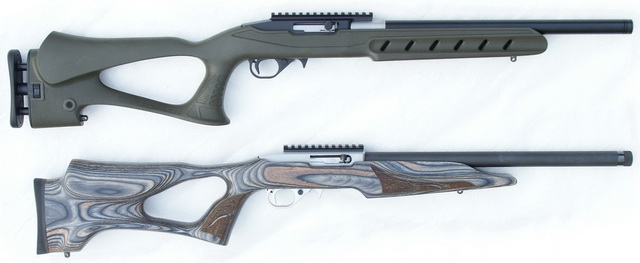One of my first suppressors, registered ten years ago, was a GEMTECH Outback-II: a lightweight can designed for the diminutive pressure and volume generated by .22LR cartridges. As was common at the time the suppressor was not designed to be routinely opened and cleaned.
This is a big mistake for a .22LR suppressor, and here’s why: .22 rimfires are very dirty. Over time layers of condensed lead, hardened with powder byproducts and bullet lubricant, will accumulate on the baffles that are supposed to disperse the propellant gasses inside the can. After thousands of rounds the silencer can double or triple in weight and lose most of its sound attenuation as it clogs with lead.
A few years ago one licensed manufacturer, SRI, began to “jailbreak” old suppressors that weren’t originally designed to be cleaned: for a few hundred dollars they clean or replace the old core and fit an endcap that can be easily unscrewed. Curious as to just how bad the problem can be I decided to open my Outback II. (Doing this in a non-destructive fashion took quite a bit of work, a lot of penetrating lubricant, and a few special tools.) Here is what the baffles looked like:

For comparison, my latest rimfire suppressor is an AAC Element II, designed to be routinely opened and cleaned, and here is what its baffle stack looks like when new:

 Just how bad is that fouling? I spent about two hours with a sandblaster trying to clean the Outback’s aluminum baffles. Here’s a picture with two done and two just begun:
Just how bad is that fouling? I spent about two hours with a sandblaster trying to clean the Outback’s aluminum baffles. Here’s a picture with two done and two just begun:
I can see why many consider it better to just replace the baffles once they’re this bad. The fouling on the inside cone of the first baffle was so stubborn I simply could not get it off with a sandblaster. Some people report better results wet tumbling baffles with steel pins for a day or two. However any mechanical cleaning strong enough to remove the lead alloy that builds up will eventually degrade the facets of the baffles themselves — especially those made of aluminum.
Is this avoidable? One experienced gunsmith I know has always applied lithium grease every few hundred rounds to his rimfire silencers. After thousands of rounds his suppressors have no buildup that can’t be wiped off with a cloth. Anti-seize and other heavy lubricants are also used for this purpose.
Lessons learned:
- Don’t buy a rimfire suppressor you can’t open to lubricate and clean.
- If you have a sealed suppressor you shoot a lot of unjacketed bullets through then eventually you’ll need to get it opened and cleaned.









